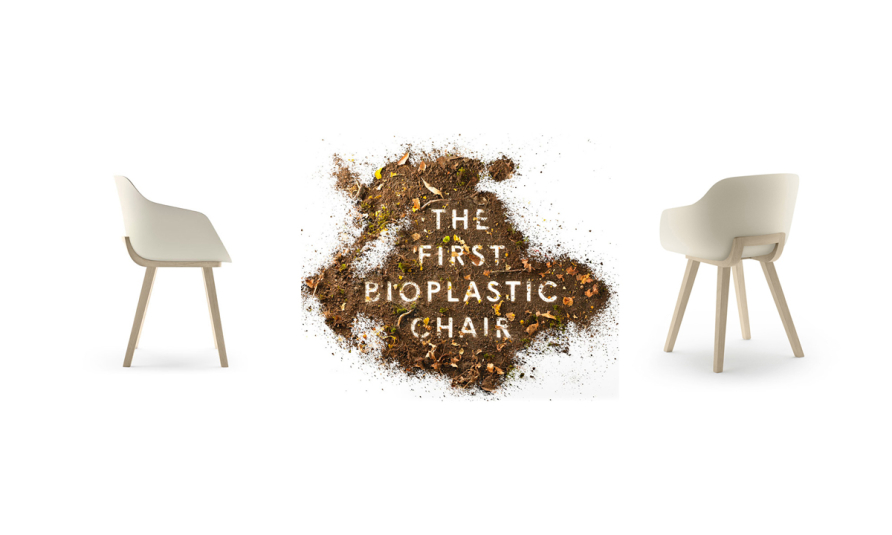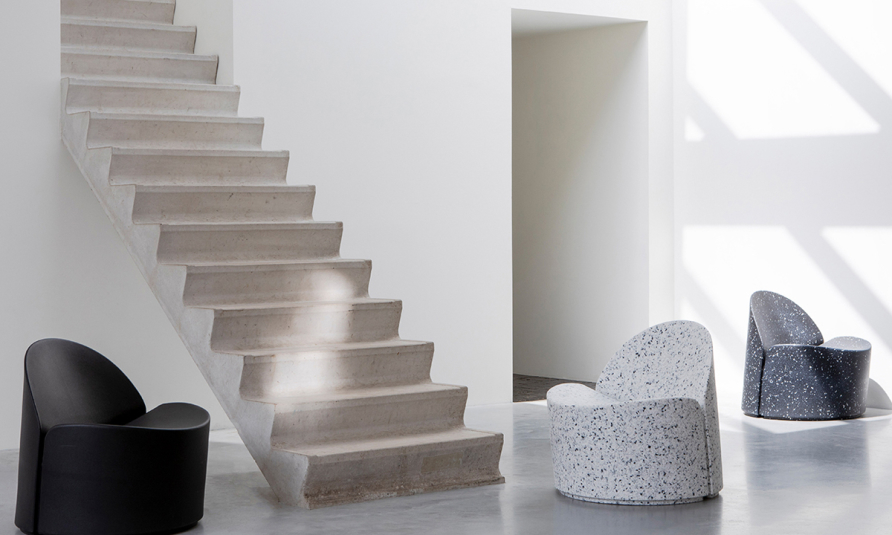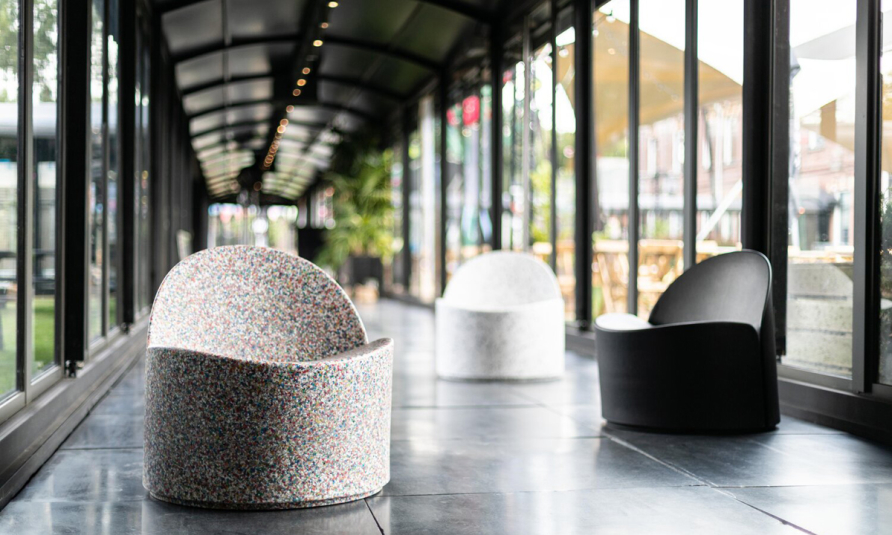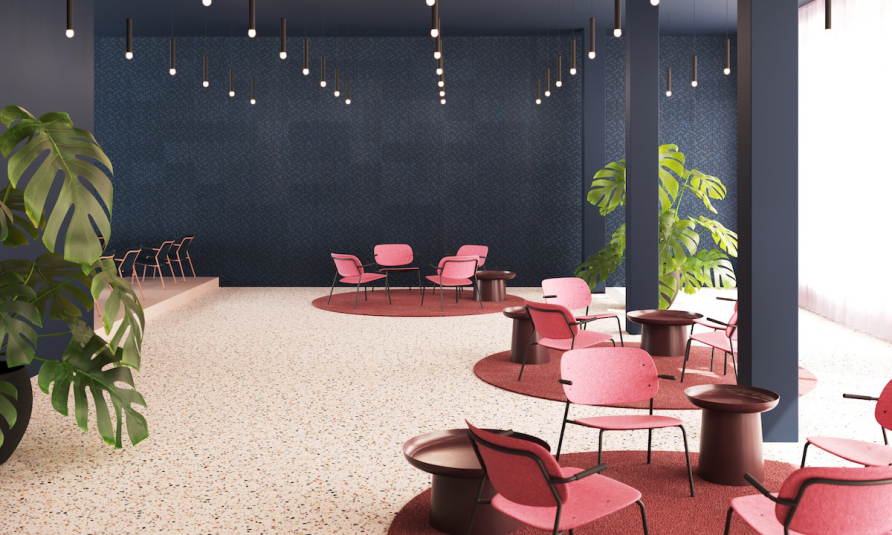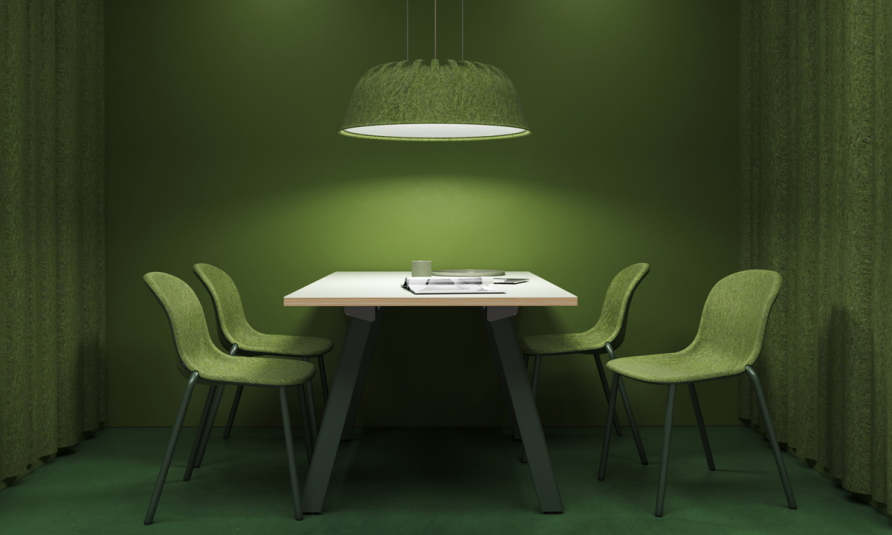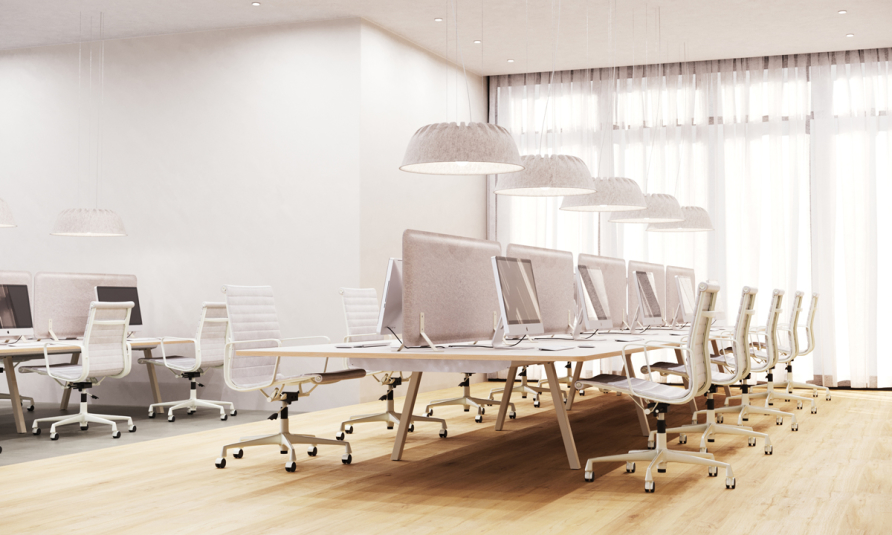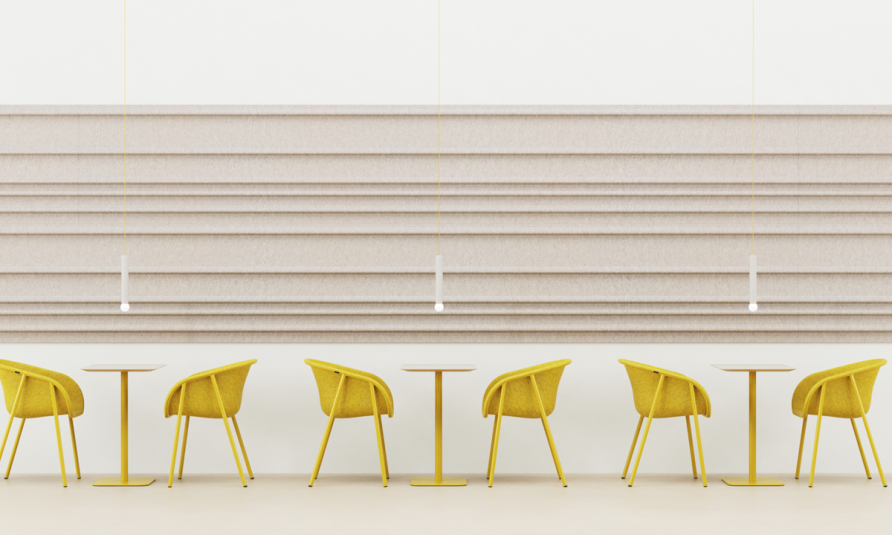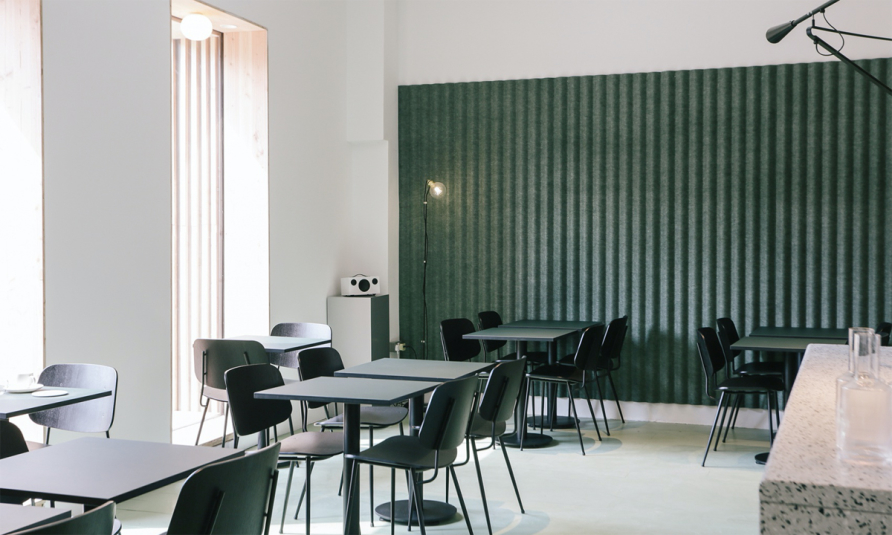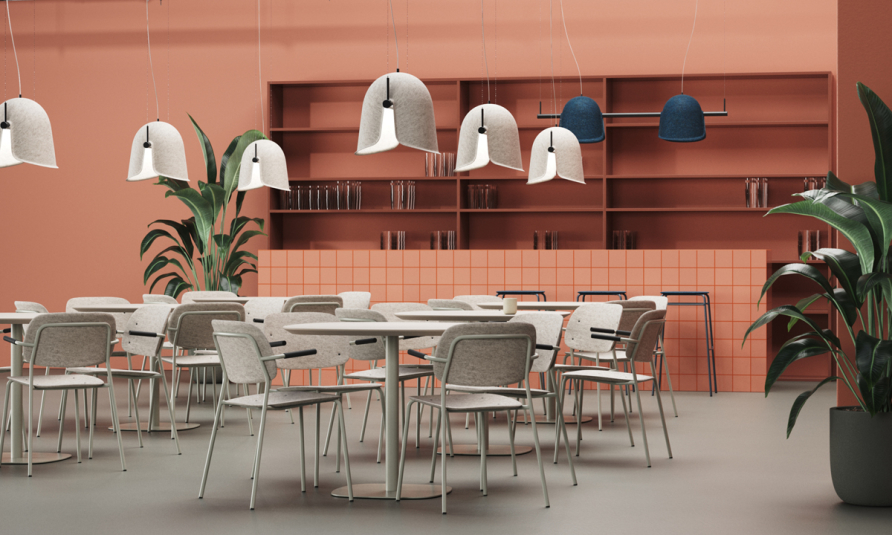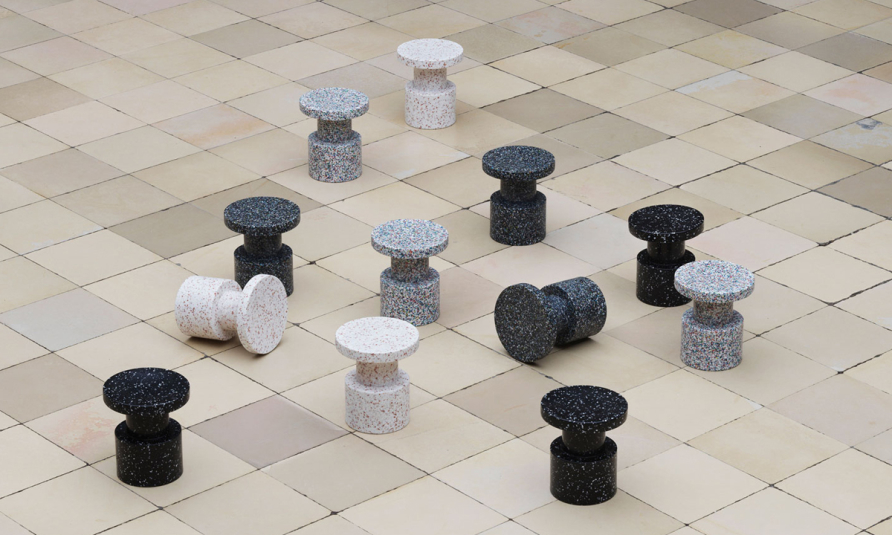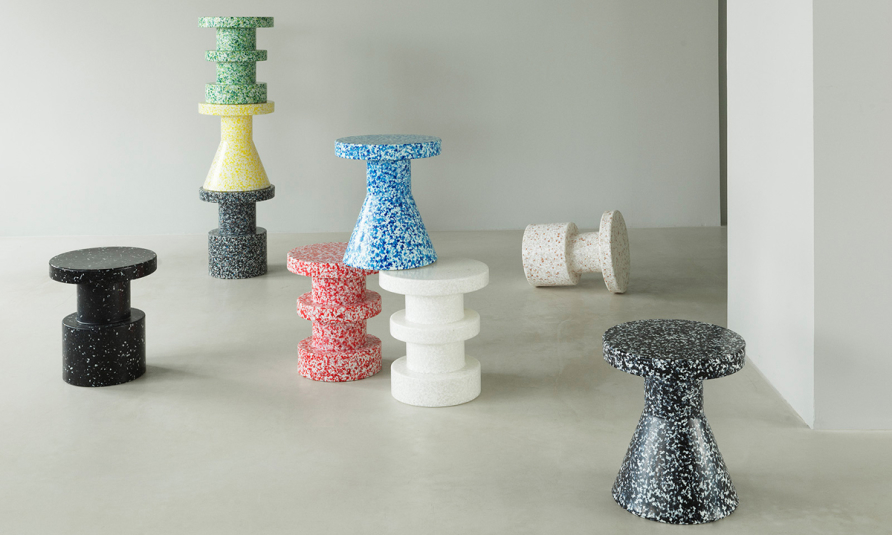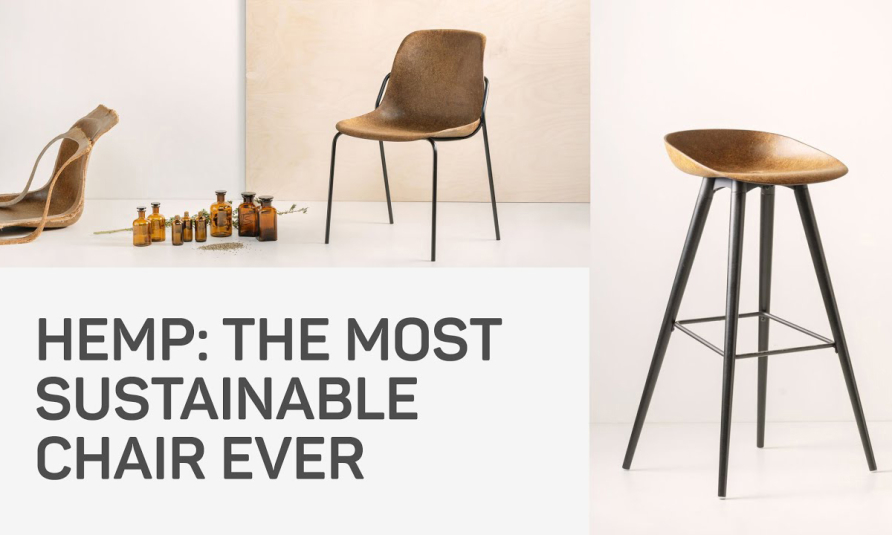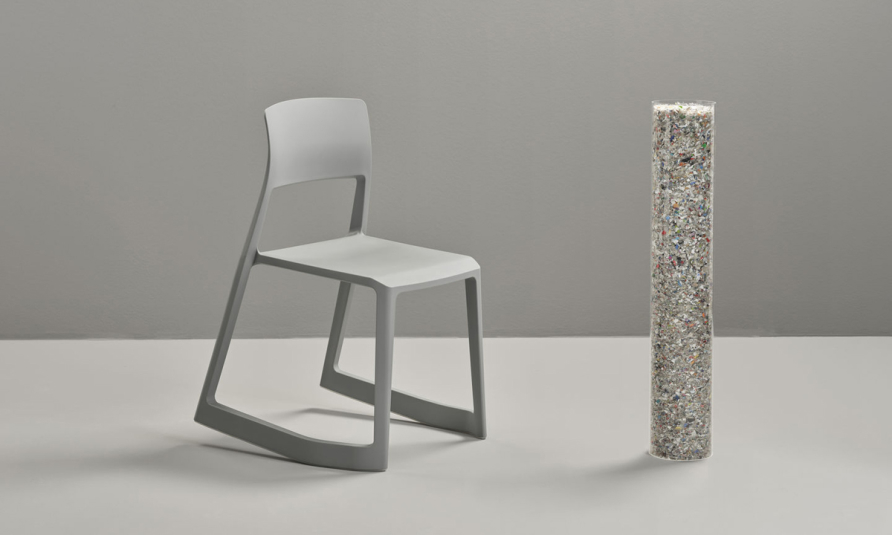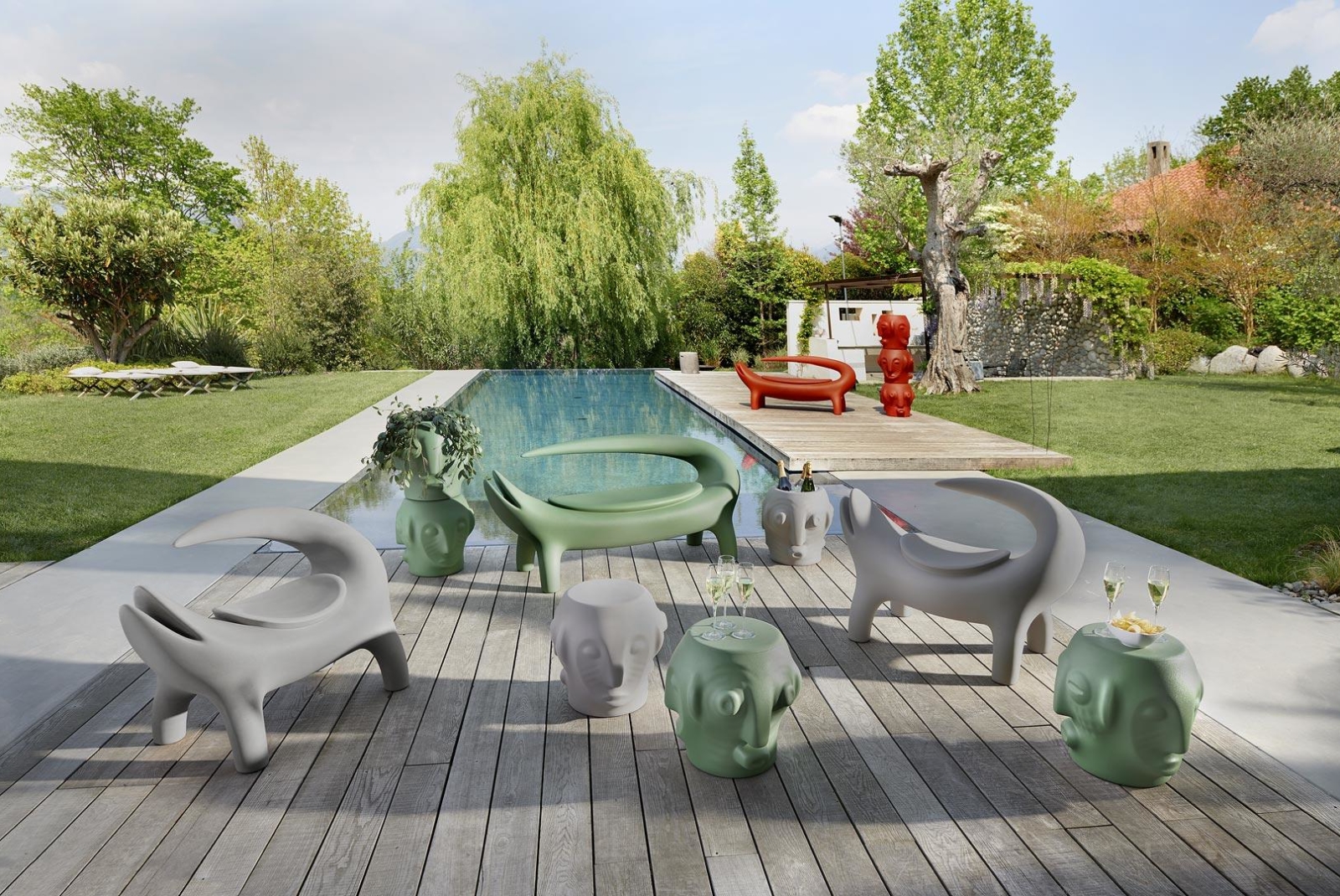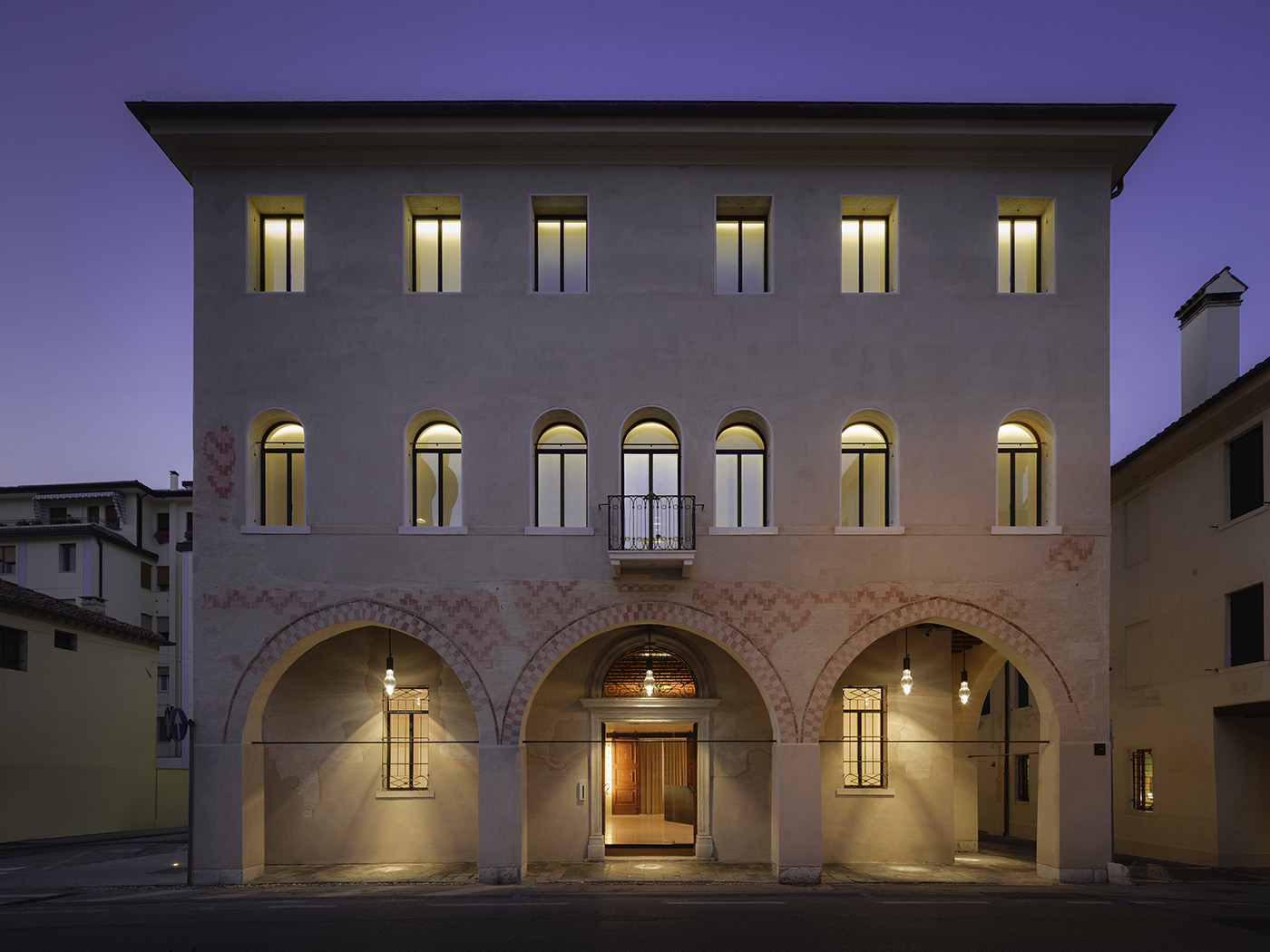Today, sustainable design is a common and obvious goal. Novel solutions are emerging – and they bring new expectations. The “recyclable” symbol is not enough anymore. Together with architects, investors and end users we search for solutions which stem from authentic, honest care for the environment.
Sustainable design incorporates many aspects of a product and various stages of its development. Those include, among others:
- using organic materials, recycled or with a low impact on the environment
- selecting high quality materials which contributes to a higher longevity
- using energy from renewable sources
- working with local manufacturers and suppliers
- promoting outdoor and educational activities
- striving for circular economy
We have written about it in the context of a recent industry conference. Today we present some of the most interesting, new examples, which involve the aforementioned aspects of sustainable design.
Hemp Fine chair (VEPA)
With Hemp Fine, Vepa has created a first in the world collection of chairs with a shell of a unique biomaterial. The used materials hemp and resin are both fully biological, plant-based and recyclable. The advantages of hemp are that it grows without artificial fertilizer or pesticides, hardly requires any water and is grown in the Netherlands.
In addition, hemp is super strong and absorbs CO2. Resulting in a negative CO2 footprint for the production of the chair. So more CO2 is absorbed than is emitted.
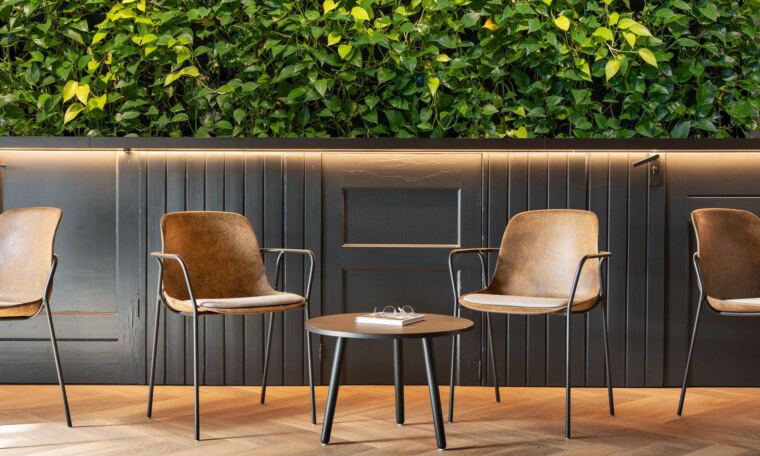
Kuskoa Bi Chair (Alki)
Bioplastic is a polymer with similar characteristics and properties to plastics made from non-renewable fossil fuels. It can be injected, extruded and thermoformed but it is made from plant-based renewable resources (beet, corn starch, sugarcane, etc.). This biobased polymer is fully recyclable and its organic properties mean that, when subjected to an industrial process, it is biodegradable.
Moreover, another significant environmental aspect lies in its reduced carbon footprint as bioplastic production results in reduced greenhouse gas emissions. Alki wanted to participate in this approach to sustainable design by means of creating a pioneering chair made from bioplastic.
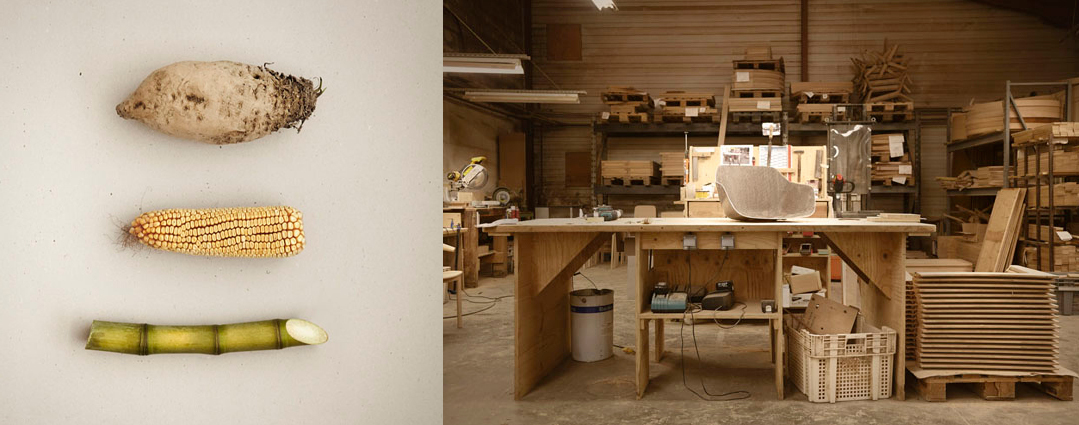
The Ocean chair (Zuiver)
Every year, 300 million tonnes of plastic waste are produced worldwide. It is a well-known fact that much of this plastic waste ends up in our oceans – 8 million tonnes a year to be precise. Zuiver believes that it has a responsibility to our oceans to do better, for a better and sustainable future. That’s why it started a collaboration with studio APE to design a chair made of 100% ocean plastic.
The seat is made from plastic waste that made its way to our oceans, collected from beaches and riverbanks, among other places. The frame is made of steel, which is 100% recyclable. With its light and organic silhouette and various solid colours, this chair fits perfectly into any interior.
To increase awareness and transparency about the project, each chair has a QR code on the product label with the exact location where the plastic waste was collected.

Albert Kuip Coffee chair (Zuiver)
Shell of Albert Kuip Coffee chair is made with coffee grounds. Coffee turns out to be a great and sustainable component for firm seats. The attained colour and texture makes it a classic example of upcycling.
The grounds are collected from a huge coffee company, which ensures their high quality.
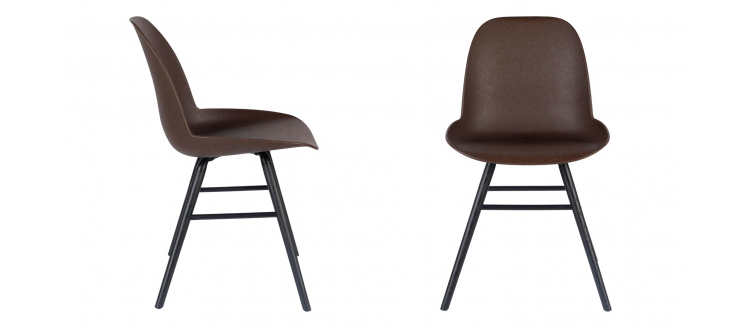
Products made from recycled bottles (DeVorm)
Dutch company DeVorm offers a wide range of furniture made from plastic bottles – PET felt. It includes chairs, lamps and acoustic products. The material looks and feels like felt but has the qualities of plastic. DeVorm created 11 unique colours. The used PET felt is made exclusively in Western Europe.
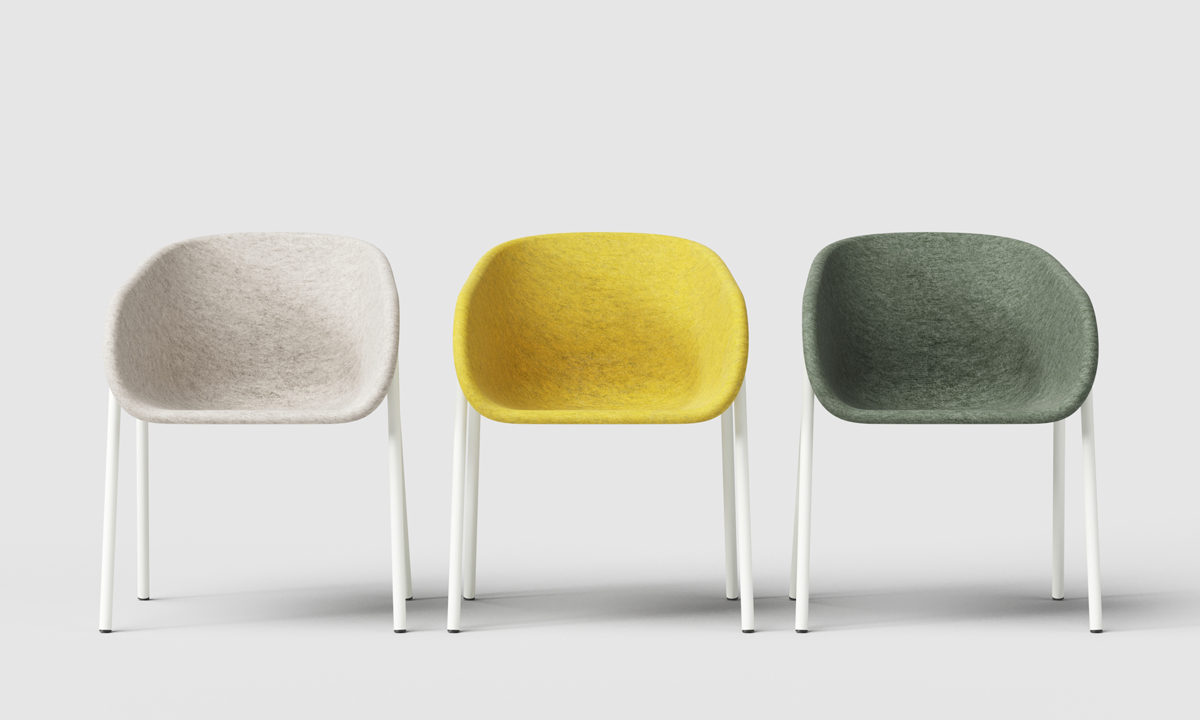
Bell chair (Magis)
Made from recycled polypropylene obtained from the waste generated by Magis’ own furniture production and from that of the local car industry. The patented material excludes almost all “virgin or new” materials and can be recycled again 100% after use. The chair was designed by Konstantin Grcic.
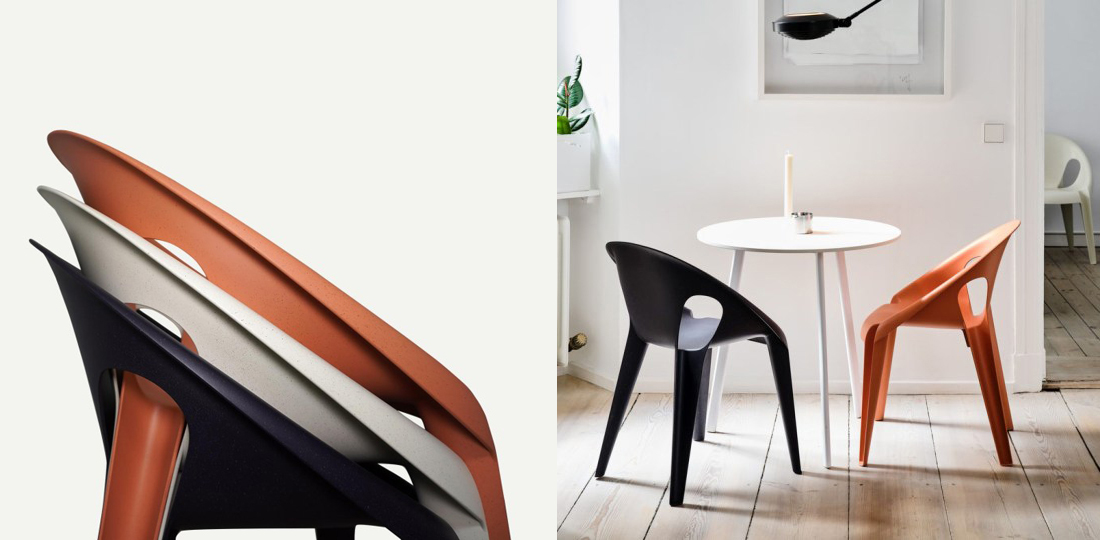
In some products, the use of recycled materials is visible straight away. Subdued colours and speckled materials are aesthetical themes which will be increasingly popular in interiors designed with the environment in mind.
Fotel Bloom (Banne)
One such piece furniture is the Bloom chair made by Dutch company Banne. The chairs are created from Low-Density PolyEthylene (LDPE) – a plastic that can be infinitely melted down and reused, yet withstands temperatures from -10°C to +50°C.
The black version is made of 100% recycled waste from the car industry. The multicoloured version is created from recycled bottle caps. And the white version uses a mix of 50-70% recycled consumer waste.
Bloom’s design is surprisingly versatile – striking, yet at home in any environment. It features a concealed rain water drain, so you’ll always have a dry seat. Or you can windproof it by filling it with a few kilos of sand. A choice of fabric covers make it perfect for use indoors.
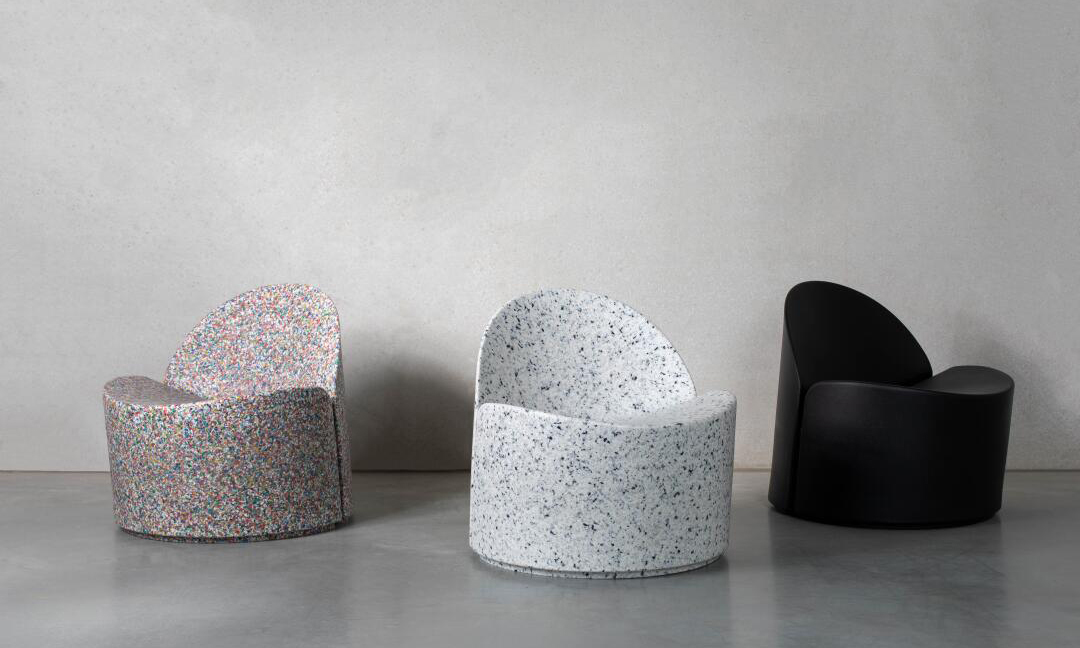
BIT stool (Normann Copenhagen)
Similarly, a novelty from Scandinavia: the Bit stool. The straightforward, utilitarian look contrasts with the pixelated surface made up of small bits of 100% recycled household and industrial plastic. A particular process, where plastic fragments are heated to a 120°C melting point, makes it possible to repeatedly reuse and reheat the material without altering its properties.
The result is a stool design with a distinctive thickness and composition, making every Bit a bit unique.

Vitra, TIP TON-RE
Ecological ambitions are shared (luckily!) also by the biggest manufacturers. Vitra has renewed one of its classics – Tip Ton designed by Edward Barber & Jay Osgerby. The form of the rocking chair hasn’t changed. But its ingredients have changed completely (100% of the chair’s material is recycled).
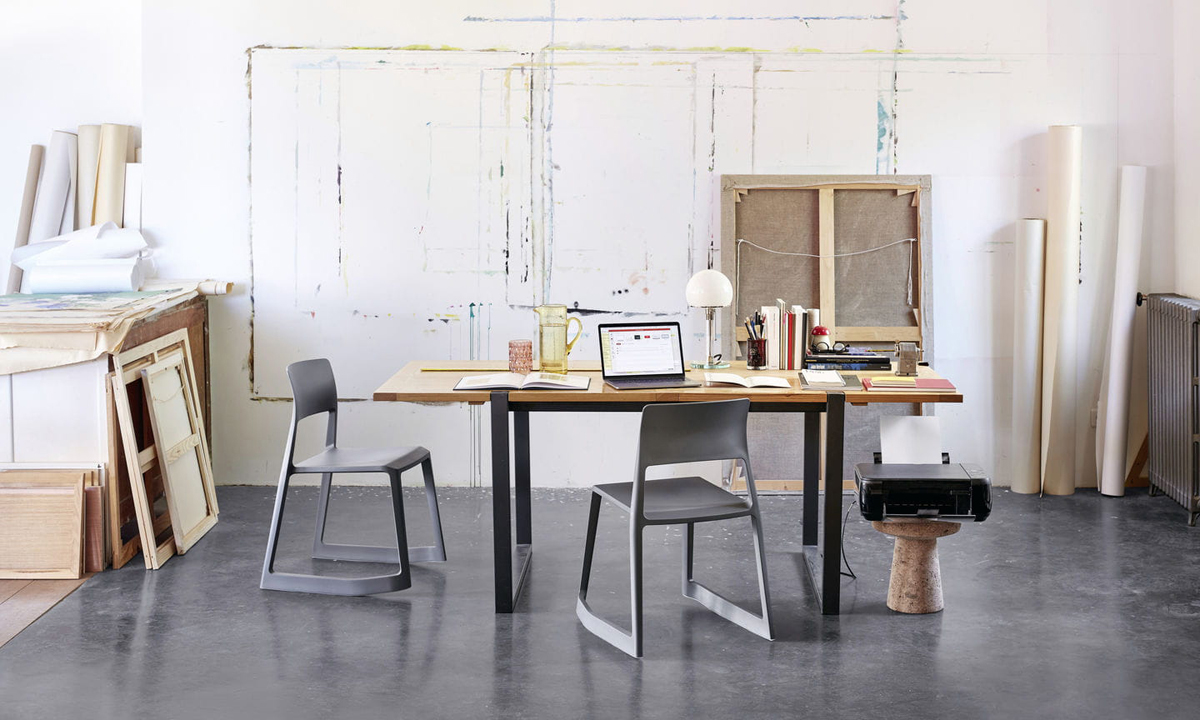
BAUX Acoustic Pulp
Swedish manufacturer of innovative acoustic panels deserves our attention. BAUX Acoustic Pulp is one of the most consistent products in the category of ecological solutions.
The new 100% bio-based BAUX Acoustic Pulp panel is the first in the world to uncompromisingly combine sound absorption, safety and sustainability. The material is made out of sustainably harvested Swedish fir and pine trees. Recycled water. Non-GMO wheat bran. Potato starch. Plant-derived wax. Citrus fruit peels. Zero chemicals.
Read more about the product here.
Produkty dźwiękochłonne BuzziSpace
A comprehensive approach towards environmental issues is held by BuzziSpace, a Belgian manufacturer of acoustic solutions. BuzziSpace products are made with the environment in mind at almost every step of the production chain: from the use of recycled materials from nearby suppliers (located within the radius of 200 km), to using renewable sources of energy, recycling factory waste, using well-thought packaging and adhering to the relevant certificates.
Some time ago we wrote more on the topic.
We invite you to our Marro showroom in Lipowa 7A. Our architects and advisors will be happy to tell more about the aforementioned and other solutions from the sustainable design category.
